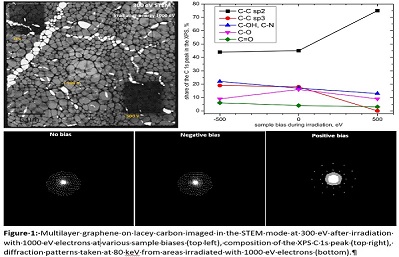
Ludek Frank
Czech Academy of Sciences, CzechRepublic
Title: Carbon overlayer from hydrocarbon precursors: Electron-beam-induced deposition/removal
Biography
Biography: Ludek Frank
Abstract
The creation of various nanostructures on surfaces by means of the electron-beam-induced deposition of carbon from hydrocarbon precursors has proven to be a productive nanotechnological tool. On the other hand, the same phenomenon represents an unpleasant challenge when operating a scanning electron microscope with the usual standard vacuum in the specimen chamber. Even under ultrahigh vacuum conditions, a successful solution has to include in-situ cleaning of the surface under observation. Our experiments have revealed the phenomenon to be crucially dependent on the energy of incident electrons to such an extent that deposition can be converted to removal of the precursors, thereby preventing carbon coating. In addition to the electron energy, other important governing factors have been identified including the electron dose, the electron current, the electric field above the surface in question and the presence of a gas such as oxygen. Another extremely important circumstance is that the removal of precursors can be achieved not only under ultrahigh vacuum conditions, but also under standard high vacuum conditions of the order of 10-4 Pa. The pilot study of the phenomenon has been performed on graphene – both free-standing and supported graphene – and the cleaning effect was demonstrated by decreased reflectivity and significantly increased transmissivity of the graphene for slow electrons of energies down to fractions of eV. Possible radiation damage of the graphene due to the electron irradiation was checked by means of Raman spectroscopy and found to be negligible below an electron landing energy of 50 eV. The phenomenon was further checked by means of the XPS established, development of the ratio between sp2 and sp3 bonds corresponding to crystalline and amorphous carbon, respectively, and the ratio between carbon and oxygen intensities in the Auger electron spectrum. The phenomenon can be employed, for example, when aiming for any “true” surface study in a standard vacuum electron microscope.


